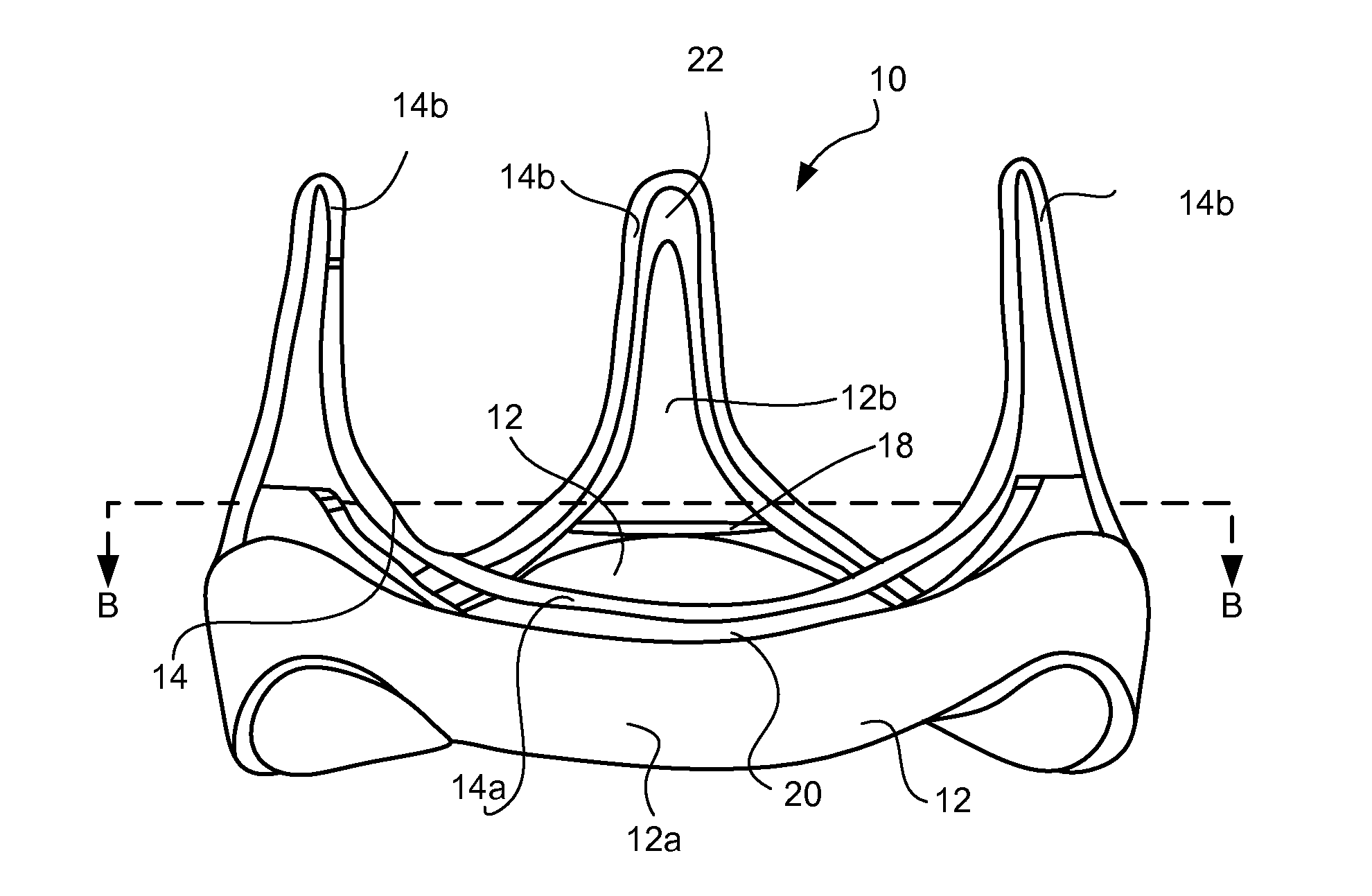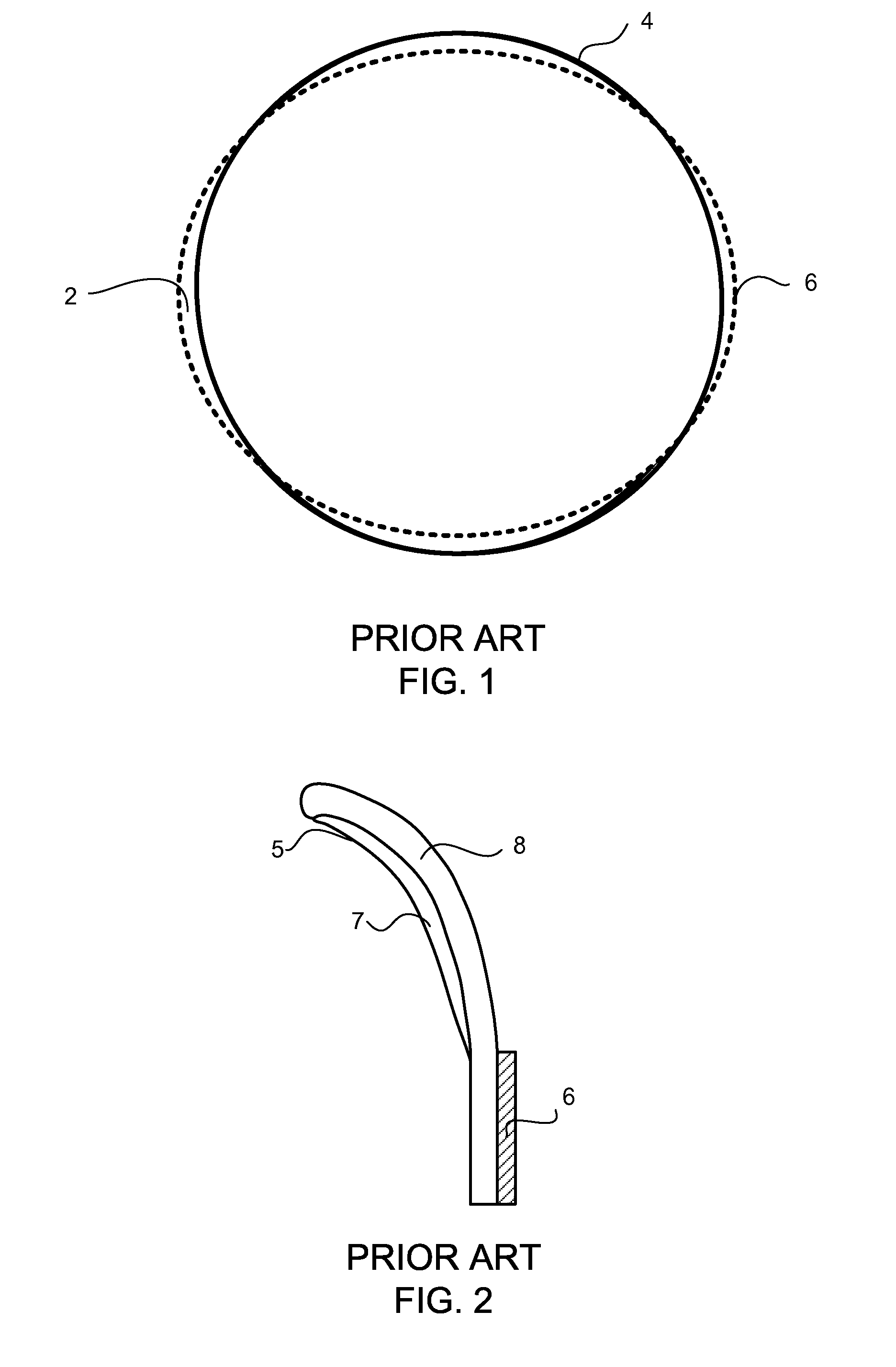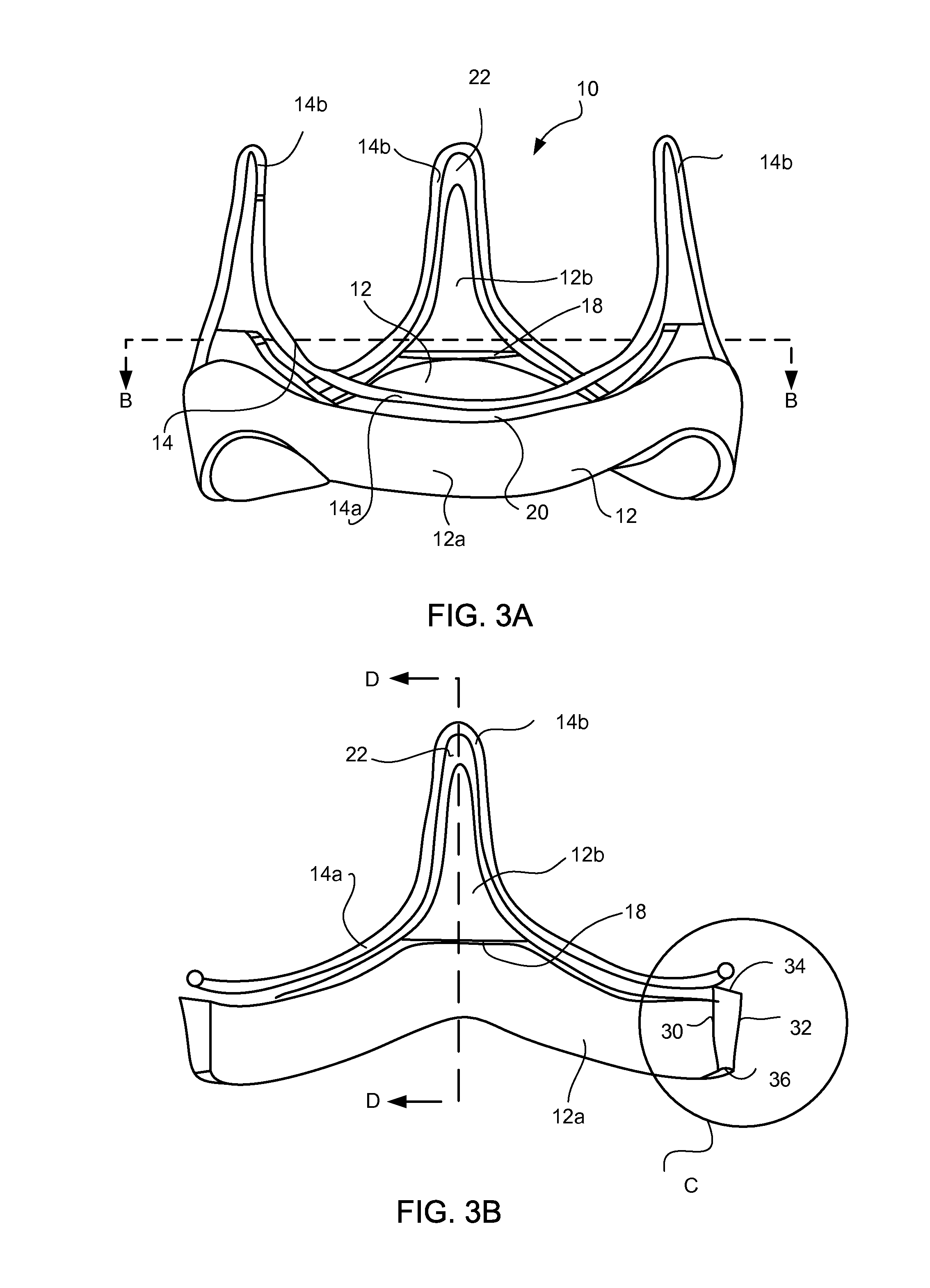Prosthetic Heart Valve
a heart valve and prosthesis technology, applied in the field of prosthetic heart valves, can solve the problems of relative obstruction of blood flow, cardiac valve abnormalities, emergency surgery, etc., and achieve the effect of minimizing the likelihood of pocket formation and extending the range of motion
- Summary
- Abstract
- Description
- Claims
- Application Information
AI Technical Summary
Benefits of technology
Problems solved by technology
Method used
Image
Examples
Embodiment Construction
[0030]The present invention will now be described in greater detail with reference to FIGS. 3A-3D and 4, and by way of the following description of exemplary embodiments and variations of the novel devices, systems and methods. The invention generally includes an implantable prosthetic heart valve 10 having an annular stent in the form of a ring 12 and an annular wireform or frame 14 wherein the stent and wireform have substantially similar diameters. The wireform has an alternating pattern of arcuate cusps 14a and upstanding commissures 14b, whereby the number of each is typically three so as to most closely match the structure and function of the natural heart valve, e.g., the aortic valve, which it is intended to replace (although a three-leaflet valve of the present invention is also suitable to replace bicuspid valves, e.g. mitral valves). This undulating pattern mimics the natural contour of leaflet attachment and serves to support the prosthetic leaflets (not shown) within th...
PUM
 Login to View More
Login to View More Abstract
Description
Claims
Application Information
 Login to View More
Login to View More - R&D
- Intellectual Property
- Life Sciences
- Materials
- Tech Scout
- Unparalleled Data Quality
- Higher Quality Content
- 60% Fewer Hallucinations
Browse by: Latest US Patents, China's latest patents, Technical Efficacy Thesaurus, Application Domain, Technology Topic, Popular Technical Reports.
© 2025 PatSnap. All rights reserved.Legal|Privacy policy|Modern Slavery Act Transparency Statement|Sitemap|About US| Contact US: help@patsnap.com



